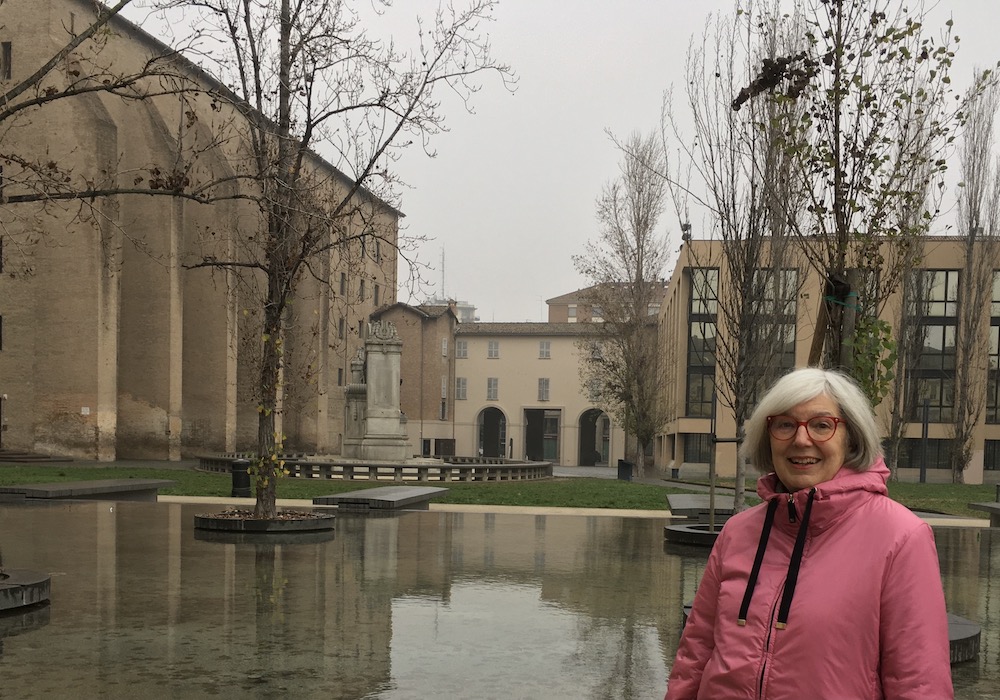If each city is like a game of chess, the day when I have learned the rules, I shall finally possess my empire, even if I shall never succeed in knowing all the cities it contains.
—Italo Calvino, Invisible Cities
Can you describe the mood of Antwerp as you feel/see it?
She’s ambiguous—a vibrant blossoming culture on top, and a rusty brown sentiment beneath the cobblestones.
What is your most heartbreaking memory in this city?
Love, love, love . . .
What is the most extraordinary detail—one that goes unnoticed by most—of the city?
Without being romantic: the sunset. Every evening the Antwerp sun goes down on the river Schelde while everybody rushes home, is having dinner or watching television. Even I forget to watch it most of the time—but it takes place in the heart of this town, evening after evening.
What writer(s) from here should we read?
Willem Elsschot (1882-1960)—a fantastic, ironic writer, who was capable of writing about the least loveable of professions, of business men and of making money, in the most beautiful, literate way. He also wrote one of the best-known poems in Dutch and Flemish literature, “The Marriage.” Breathtakingly painful, about a man sitting by the fire, looking at his wife, and pondering whether he should kill her.
Is there a place here you return to often?
Central Station. I am a traveler. For years I have traveled between Amsterdam and Antwerp, and every time I arrive at this station, it impresses me. It has the grandeur of Elsschot’s time, and some writers have called it the most beautiful, or even the last, train station in the world.
Is there an iconic literary place we should know?
There is a tiny small square at the Minderbroedersrui with a bronze bust of Paul Van Ostaijen (1896-1928), a very renowned and influential Antwerp poet who was the leading expressionist in Flemish and Dutch poetry. He wrote volumes of poetry with names like Occupied Town (Bezette stad) and Celebrations of Fear and Pain (Feesten van Angst en Pijn), but also the most beautiful and simplistic verses, like the immortal poem, “In the morning Marc is greeting the things” (Marc groet ’s morgens de dingen)—about a boy who says hello to the chair, the bread, the flowers on the table. It was at this square, that in 2006 a young racist, after buying a gun, started a raid. He first shot a Turkish woman reading her book, before heading for a street nearby, where he killed a Malinese au pair and a two-year-old girl. It was the event that woke this town up and forever changed it.
Are there hidden cities within this city that have intrigued or seduced you?
Of course. Like every city, there is a visible one, and one where only it’s inhabitants can lead you. Unless you get to know the people, you’ll end up with only Rubens and sixteenth-century beauty and pride. But that’s the façade, the painting. Life starts from there.
Where does passion live here?
In the cafés, definitely. Everything takes place in the cafés, the old, brown, hidden ones. There is one café in Antwerp called De Spleet or The Crack. Well, that says it all. It’s the smallest, narrowest café in Antwerp. That’s where it happens . . .
What is the title of one of your poems about Antwerp and what inspired it exactly?
“De Changeur,” which is a song I wrote, dedicated to the most famous Flemish folk singer, Wannes Van de Velde. He died in 2008, and I regard him as one of my tutors. Actually, he was Antwerp. He knew every place, especially the old harbor. Most of my answers here are actually answers about him. From the sixties onwards, he revived the Antwerp dialect and renewed “traditionals” by rearranging them, and providing them with Greek, Spanish rhythms or Italian polyphony. There is a YouTube clip where I sing one of his love songs: http://www.youtube.com/watch?v=P-yPX-blLVg
Inspired by Levi, “Outside Antwerp does an outside exist?”
Yes, even though many inhabitants don’t know it. But then again, they’ve got many reasons to stay inside.
Ramsey Nasr is a poet, writer, actor and director. He is the author of numerous award-wining books, and currently the Poet Laureate of the Netherlands. He lived in Antwerp for 17 years, and currently resides in Amsterdam. www.ramseynasr.nl/
NH’s Discovery of the Month: Schlemmer Café Restaurant/ Tabac Animé, Anno 1984. The literary café to go to in The Hague, The Netherlands. The poet Eva Gerlach—from what I’ve read in translation—is intriguing. I am also excited to read the works of Tommy Wieringa and the journalist Joris Luyendijk.











